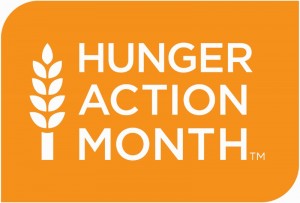By Susannah Morgan, Food Bank of Alaska Executive Director
September is Hunger Action Month when we shine a light on the thousands of people who are working to reduce hunger in the United States. Closer to home, there are 90,000 Alaskans who are food insecure, meaning they don’t know where their next meal is coming from. If this was a disease, we would call it an epidemic.
Too many Alaskans worry about feeding their families. According to the Feeding America studyMap the Meal Gap, 13.5 percent of us are food insecure. Feeding America, a national hunger-relief charity, reports that 77,000 Alaskans ask for food assistance from a food pantry, soup kitchen or shelter every year. Other facts about hunger from the organization include:
- Hunger is an income issue; people are hungry because they don’t have money for food. The average income of food assistance client is $15,130 a year.
- Sixty-three percent of Alaska’s hungry depend on work, Social Security or unemployment benefits for income. Twelve percent are disabled. That means that most hungry folks are either working, want to work, are too old to work, or are physically incapable of work. Only 5 percent rely upon welfare.
- Hunger can affect everyone, no matter one’s age or ethnic background. Alaska’s hungry are 54 percent White; 28 percent Alaska Native; 10 percent Hispanic; 4 percent Black; and 6 percent Other
- Hunger and homelessness are not the same thing. Only 18 percent of those seeking food assistance are homeless. Homelessness is a very severe problem, but hunger hurts many more Alaskans.
- Hungry folks try to be good citizens. Sixty-nine percent of adults seeking food assistance are registered to vote.
- Finally, food pantries across the state report drops in requests for food assistance during October; many Alaskans spend their PFDs on food and other necessities.
In my next post (available here) I highlight how the food bank program works in Alaska and some of the nonprofit organizations that provide food assistance across our state.
The Rasmuson Foundation invests both in individuals and well-managed 501(c)(3) organizations dedicated to improving the quality of life for Alaskans.
Learn more at rasmuson.org.





